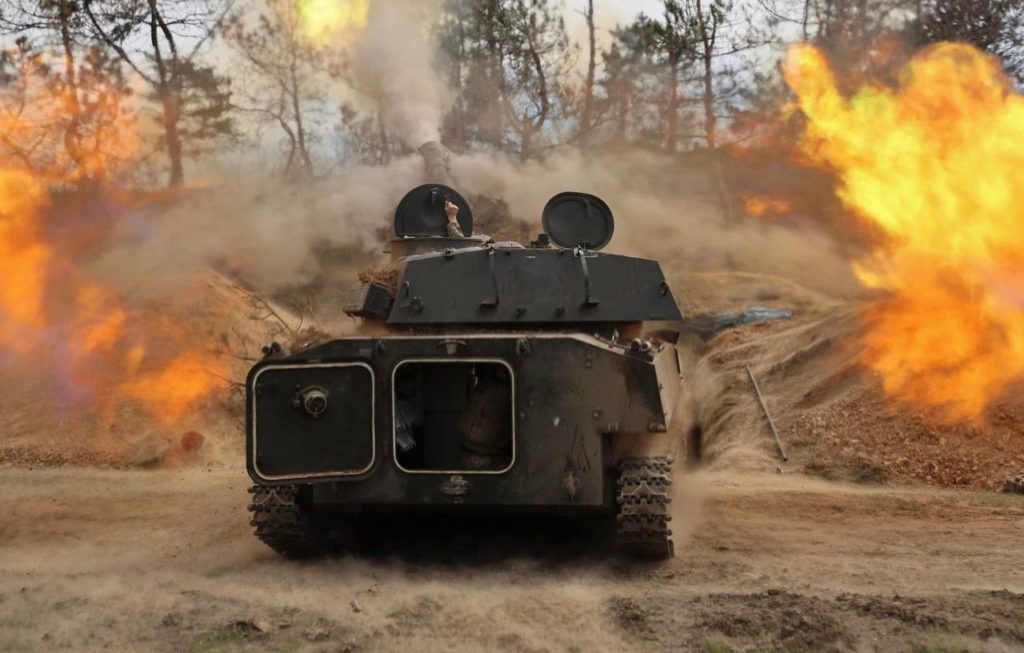North Korean arms transfers to Russia estimated over 500,000 artillery rounds in two months, OSINT group says
An investigative study, supported by satellite imagery and cargo analysis, confirms the delivery of 500,000 artillery rounds from North Korea to Russia within two months. The post North Korean arms transfers to Russia estimated over 500,000 artillery rounds in two months, OSINT group says appeared first on Euromaidan Press.

An investigation by open-source intelligence (OSINT) research group Frontelligence Insight has found that North Korea has shipped an estimated 500,000 artillery rounds to Russia over the past two months.
The study utilized satellite imagery, shipping documentation, and insider sources to track ammunition crates traveling from North Korea to Russia. Analysis shows over 2,000 cargo containers were transported, each holding around 300 crates of 152mm or 122mm artillery shells. Each standard 20-foot container can hold approximately 300 crates. Crates contain either 1 or 2 artillery shells of 152mm or 122mm caliber.
Frontelligence Insight utilized several approaches to estimate the number of artillery shells transferred from North Korea to Russia. First, they confirmed through satellite imagery that standard 20-foot shipping containers were used consistently. Typical container capacity is 20-27 tons, so they assumed a moderate 23.5 tons. Knowing the standard weight of 152mm and 122mm ammo crates, they calculated approximately how many crates could fit into each container.
The potential per-container totals were then verified against the maximum wagon loads that deliver the containers over land. Even when considering suboptimal loading conditions, the overall totals remained largely unchanged. By multiplying the number of documented containers by the estimated number of shells per container, the researchers arrived at the 500,000 round approximation.
“This estimate, which leans toward the conservative side, suggests that the actual number likely surpasses 500,000. These artillery shells encompass both 152mm and 122mm calibers, signifying a substantial enhancement of Russia’s military capabilities, particularly as the winter season approaches,” the researchers wrote.
Satellite photographs confirm cargo deliveries to Russia’s Tikhoretsk ammunition depot. Newly constructed berms at the depot now contain crates, after appearing empty in September.

The Tikhoretsk ammunition depot, previously known as the 719th Artillery Ammunition Base, played an important role in the supply of various types of ammunition, including 152mm, 125mm, and 122mm, along with smaller ammunition like hand grenades, VOG grenades, and PG-7 (RPG-7 ammo).


Frontelligence documents at least shipments between the countries in October, beyond the 1,000 containers previously reported by the White House. While exact counts are uncertain, imagery shows container loading at North Korean Rajin port continues.
South Korea suspects possible short-range ballistic missile transfers, but the investigation found no evidence verifying this. Frontelligence Insight remains doubtful but not fully dismissive regarding missile claims:
“Our team made a diligent effort to scrutinize shipments, including examining the dimensions of unloaded cargo from containers. However, none of them appeared to match the expected dimensions of SRBM containers. While there is the possibility that we might have missed that specific container or that an alternate route was used for the shipment, we remain somewhat skeptical about reports regarding SRBM deliveries from North Korea to Russia, but cannot entirely dismiss this possibility,” Frontelligence wrote in an update to their initial research.
The study notes that ammunition quality has raised questions, as much was likely produced between 2000-2010. Higher dud rates around 25% are possible given the age. Still, with thousands of rounds fired daily, even faulty supplies could prove advantageous.
Frontelligence Insight concludes that the influx of North Korean ammunition may enable Russia to undertake new large-scale offensives or prolong existing barrages against Ukraine. However, Russia is unlikely to regain its overwhelming artillery advantage during the initial invasion phases. The deals also raise concerns about military cooperation between Russia and North Korea, including potential technology sharing.
Read also:
- Seoul: North Korea likely sends missiles as well as shells to Russia
- North Korea’s secret arms shipment to Russia exposed by South Korean intel
- Lithuania: EU supplied Ukraine with only 300,000 shells, while DPRK already sent 350,000 to Russia
- British intel: North Korea on course to become Russia’s major arms supplier alongside Iran, Belarus
- Bloomberg: North Korea sent 1,000 ammunition containers to Russia for use in Ukraine
The post North Korean arms transfers to Russia estimated over 500,000 artillery rounds in two months, OSINT group says appeared first on Euromaidan Press.



